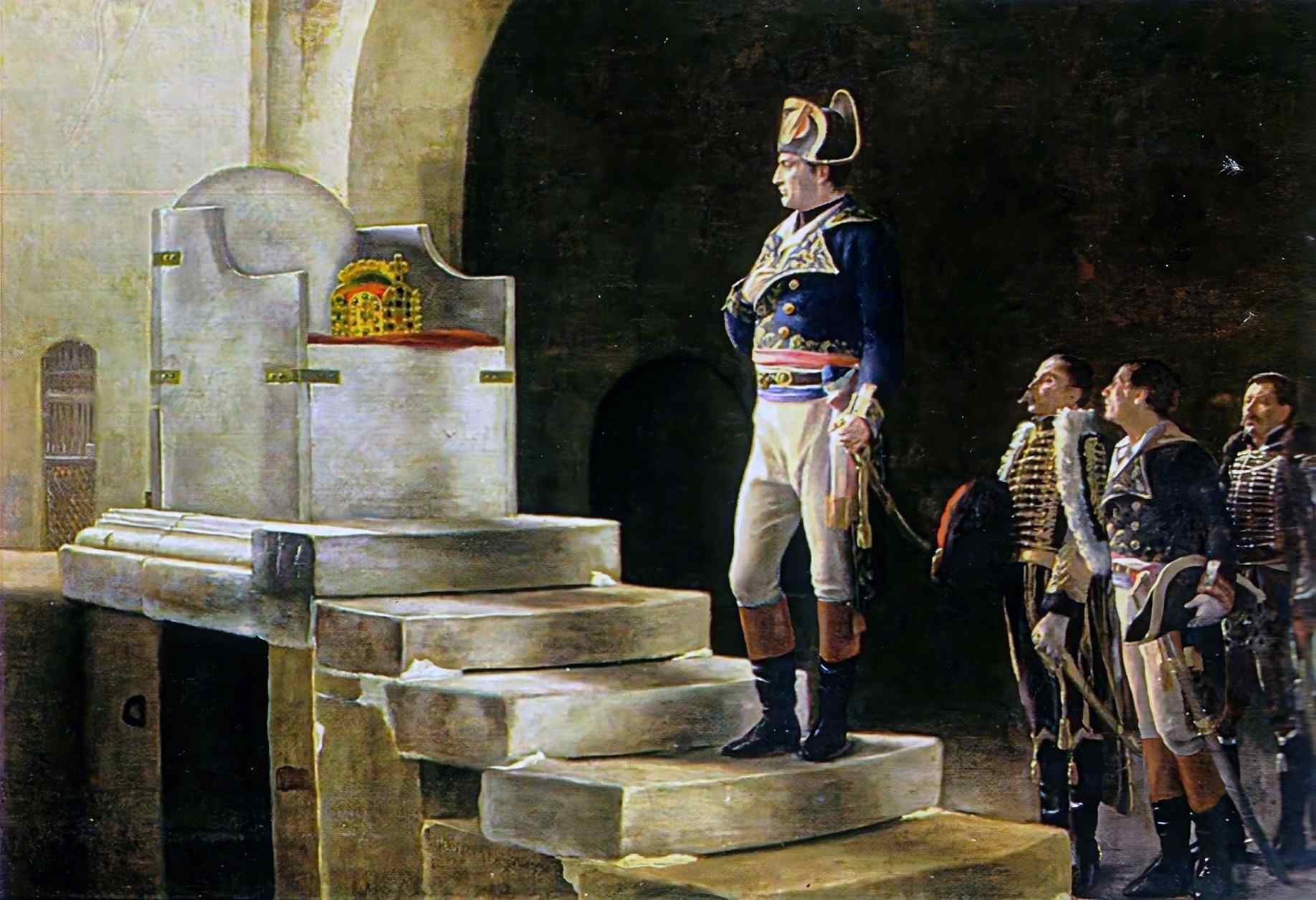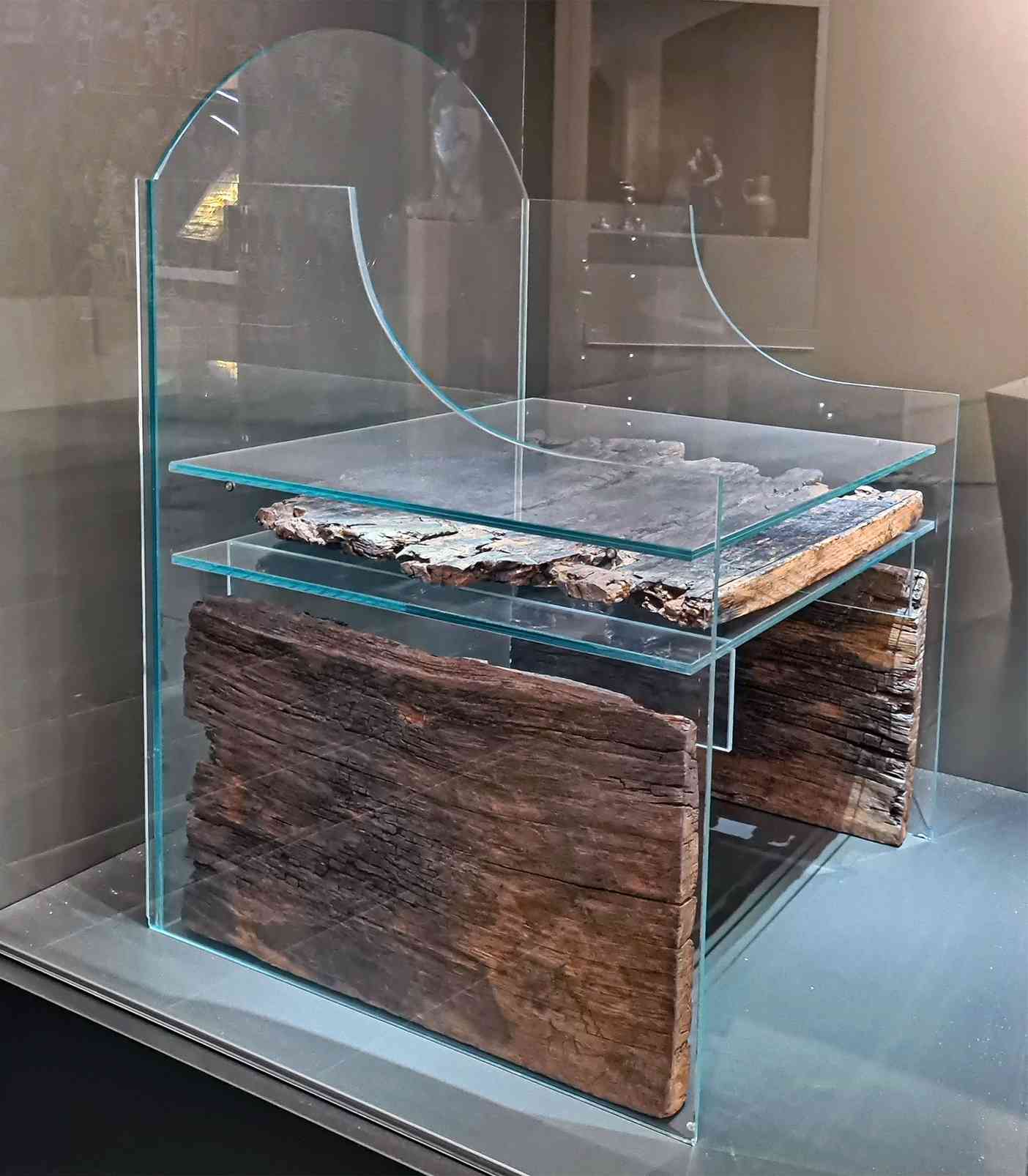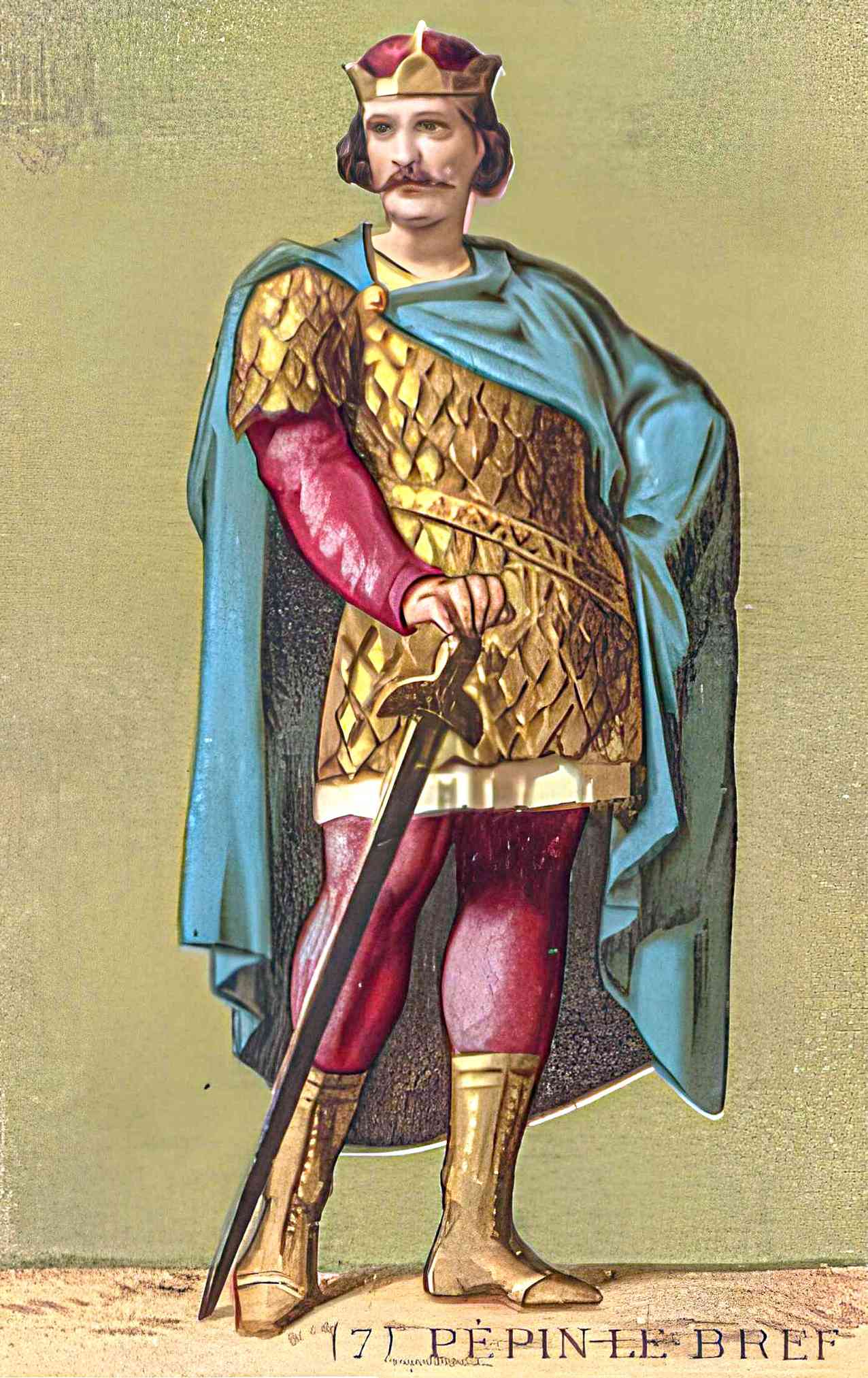The Throne of Charlemagne is one of the historically most important pieces of furniture in the Aachen Cathedral in Germany. It is remarkable that such a simple-looking throne could garner so much interest. Even though it is known as the Throne of Charlemagne, its provenance as the seat of the legendary ruler is still up for debate. The throne is said to have the qualities of a relic, although its unassuming look leaves much to the imagination. There are so many mysteries around the Throne of Charlemagne.
What Made the Throne of Charlemagne Special?
A Myth or Relic

There is no evidence to suggest that the throne ever belonged to Charlemagne. The name “Throne of Charlemagne” is never directly mentioned in the sources. The throne’s minimalist form begs the question of what it represents and whether or not its construction gives it reliquary overtones.
The Throne of Charlemagne is often referred to as a myth or religious relic. According to the story, all Holy Roman monarchs wanted to be crowned at Aachen, and only the one who sat on the king’s throne was king. And, although it is not directly confirmed, Charlemagne was on the throne at the time.

But why would monarchs choose to sit on this throne while others were more prosperous? Because even Charlemagne wasn’t crowned king in Aachen but in Noyon in 768. And he most likely attended the masses held in the Palatine Chapel on this throne.
But this is where the throne really shines as a religious relic. The material evidence and the fact that Charlemagne’s canonization occurred in 1165 lend credence to this idea and the throne’s status as a “secondary relic“.
The overall design elements of the Throne of Charlemagne are very lacking in quality and detail. The German chronicler Widukind von Corvey’s 936 account is the only one that specifically mentions a throne in the gallery.
No Contemporary Reference

On the occasion of Otto the Great’s coronation at Aachen, a mere 122 years after Charlemagne’s death, a throne is mentioned. However, the fact that the throne is not mentioned in Einhard’s (d. 840) “The Life of Charlemagne” raises serious issues regarding whether or not it existed during Charlemagne’s lifetime and whether or not Charlemagne actually sat on it.
This is similar to other objects that are said to belong to Charlemagne, such as the Talisman of Charlemagne, the Crown of Charlemagne, or the Sword of Charlemagne.
It is not evident from the records that there was ever a throne in Aachen Cathedral during Charlemagne’s reign between 768 and 814. A plethora of probes have been carried out to answer this question.
In 1899, the architect Joseph Buchkremer was the first to investigate the origins and design of the Throne of Charlemagne. Modern researchers, archeologists, and architects still use Buchkremer’s findings as evidence in their arguments for the throne. Some of their views were diametrically opposed to Buchkremer’s, while others confirmed certain aspects.
The Design of the Throne of Charlemagne

Even though it is kept very basic for a mighty king, the Throne of Charlemagne still manages to make quite an impression visually.
The throne itself is constructed out of marble slabs, while the lower construction includes a stairway. There is also an altar on the back of the throne dedicated to Nicasius of Rheims, but it has little significance to the throne since it was added later in 1305.

The Throne of Charlemagne has a limestone base. A smaller eastern half and a bigger western half make up the base plate. A riveted cross holds up four stone pillars that support the structure. The pillars are supported by profiled plinths that are placed immediately on top of the slabs. The stairway is just in front of them. These stairs have six steps and lead to the throne.
The six-step structure is comprised of four antique column drums. The real royal seat has a wooden framework within it and is topped with four marble slabs. The marbles, along with the steps, are believed to have been imported from the Church of the Holy Sepulchre in Jerusalem, c. 800.
However, owing to air raid shelters and other factors during World War II, the Parian marble’s surface is now darker, discolored, and covered with vertical drip tracks.
Six bronze brackets, bent at right angles, hold the plates in place; these are riveted to the plates themselves. Two vertical support boards and a seat plate make up the hardwood interior structure. The throne’s marble panels have seen better days; their original place of use was not the throne. Wear and tear, such as scratches, provide evidence of this.

Those slabs were probably used as flooring. Moreover, they are completely covered with graffiti. Writing on the floor was a common practice during lengthy waits in medieval and ancient times. Especially discernible are images of the Nine Men’s Morris board game and a crucifixion scene.
However, the crucifixion scene is controversial. Some researchers identify this graffiti, while others point out that it’s lacking two key elements. Included in this are the feet, the cross trunk, and the hint of a head, complete with an aureole (a religious halo).
The Throne of Charlemagne in the Aachen Cathedral reflects a rather alternative conception of a throne, one that is not associated with lavish ornamentation.
Was the Throne of Charlemagne Real?
Historians do not fully endorse the throne due to a lack of supporting evidence. The throne may not have been in existence during Charlemagne’s lifetime, although there are still several claims that it was in use by Charlemagne.
The setting of the throne might provide information about its age. Joseph Buchkremer inspected the throne in 1899. Behind the throne is the Nicasius Altar, which Buchkremer removed so that it could be restored. After removing the ruined altar, he discovered a worn surface underneath. Buchkremer explained the deterioration of the stairwell by pointing out that it had previously been modified.
The medieval archaeologist Sven Schütte deduced subsequently that the actual throne was being constructed on brand-new foundations. The floor’s Carolingian-era date is another evidence of the throne’s tremendous antiquity. The pink Carolingian mortar, which was broken due to an earthquake, lends credence to this theory. Buchkremer uses more evidence to prove that Charlemagne occupied the throne.
According to him, the fact that most of the monarchs who succeeded Charlemagne wished to be crowned at Aachen, on Charlemagne’s throne, explains why the throne was possibly there throughout Charlemagne’s lifetime.
The use of an ancient column drum method to build the steps is potential evidence that they were built during Charlemagne’s reign. This theory is based on the fact that Charlemagne imported several pieces of Italian marble. The foundation stones also have a similar composition. Stones are identical in profile and proportions to those used in St. Mary’s Church.
Similarly, the dovetail structure of the throne was already commonplace in antiquity but was extensively employed throughout the Carolingian era.
Since Charlemagne went about building his Aachen Cathedral and St. Mary’s Church with great care and precision, historian Lobbedey concludes that the cathedral’s technical flaws disprove that the throne was built under the emperor’s supervision.
References
But the bronze lattice door in front of the throne might be a convincing proof of the throne being in the gallery since it was built and Charlemagne’s usage of it, as claimed by Buchkremer. The bronze lattice is fairly elaborate or ornamented, and this door would be unnecessary if there wasn’t a royal artifact seen through it.
Both Einhard and Buchkremer referred to Charlemagne’s palatine chapel in Aachen as a “porticus” (a chapel or burial place in a church). This reference points to another entrance, and this entrance, like the throne, would be located in the same gallery. The porticus potentially served as a passageway between Charlemagne’s private quarters and the throne, potentially providing him with an unobstructed view of the octagon below.
The throne was installed in the church’s central octagon, which serves as the palatine chapel’s main area.
In this light, Einhard makes specific reference to the “porticus” in the “Vita Karoli Magni,” but never once brings up the throne. It’s possible that the “porticus” served different purposes as well. Therefore, this text cannot prove that the throne in the gallery existed in Charlemagne’s reign.
The Throne of Charlemagne also missed out on opportunities to be more luxurious and impressive. Some historians conclude that this “extraordinary simplicity” indicates the monarch’s advanced years, instead of Charlemagne’s reign. So, calling the throne “Charlemagne’s Throne” might be a stretch.
Radiocarbon Dating
The internal wooden construction, which is on display at the Rheinisches Landesmuseum Bonn, formerly had a marble sitting plate that has since been lost. St. Stephen’s Purse and other Imperial Regalia were housed under it on a shelf. This oakwood panel was dated to about the year 800 using radiocarbon technology.
The tree, whose wood was used to construct the throne, was cut down somewhere between 760 and 824, most likely in 798. This corrects the earlier assertions that the wood used in the throne was of Carolingian origin (800–888).
Some historians argue that it is not possible to conclude that the complete throne was constructed in the year 800 based on the dating of the wood alone. Given the present level of knowledge and technology, an absolute date is still not attainable.
Since the throne was not mentioned at all in contemporaneous sources, the conclusions of the dating of the wood of the throne might be misleading, even if they do match within the lifetime of Charlemagne.
The Throne of Charlemagne at a Glance
What is the significance of the Throne of Charlemagne?
The Throne of Charlemagne is a historically important piece of furniture in the Aachen Cathedral in Germany. While its connection to Charlemagne is still debated, it holds mythical and religious significance as a relic associated with the legendary ruler. It is believed that sitting on the throne symbolized kingship, and it is considered a secondary relic due to its association with Charlemagne’s canonization.
Is the Throne of Charlemagne confirmed to have belonged to Charlemagne?
There is no direct evidence to suggest that the throne actually belonged to Charlemagne. The name “Throne of Charlemagne” is not mentioned in historical sources, and it is not mentioned in Einhard’s “The Life of Charlemagne.” Its association with Charlemagne is based on legends and traditions surrounding the coronation rituals at Aachen.
What is the design of the Throne of Charlemagne like?
The Throne of Charlemagne has a simple design. It is constructed of marble slabs with a limestone base. The structure includes a stairway and features an altar dedicated to Nicasius of Rheims at the back, which was added later. The throne itself has a wooden framework inside and is topped with marble slabs. The surface of the marble has been discolored and damaged over time.
Are there any contemporary references to the Throne of Charlemagne?
There are no contemporary references to the Throne of Charlemagne during Charlemagne’s reign. The first mention of a throne in Aachen Cathedral comes from Otto the Great’s coronation, 122 years after Charlemagne’s death. The lack of contemporary references raises questions about its existence during Charlemagne’s lifetime.






